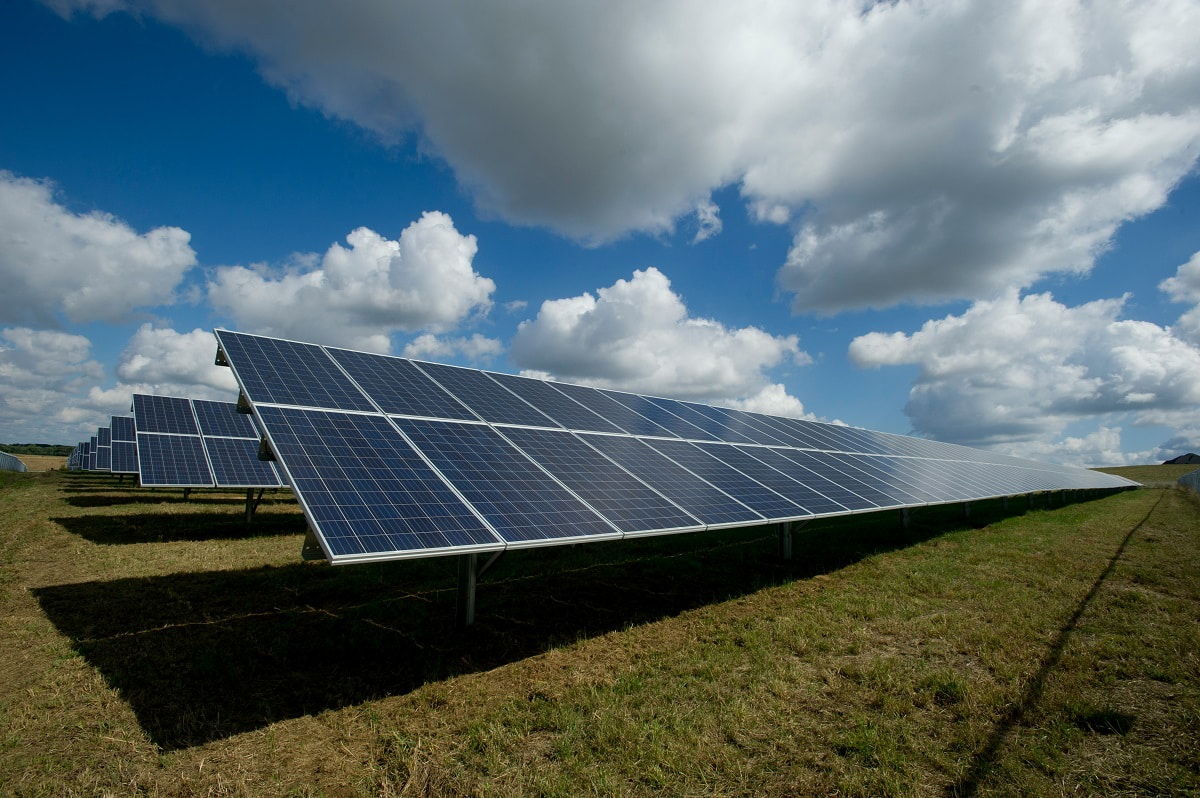On one level, it is unsurprising that Chinese companies are pouring billions into US green manufacturing projects. For most Chinese cleantech companies, aggressive price-wars and overcapacity at home are depressing profits. The United States remains a huge market and by dint of largesse from the Inflation Reduction Act (IRA), an especially lucrative one. Still, given the febrile mood in Washington, the spectacle of massive Chinese-owned factories breaking ground seems especially incongruous.
The numbers are significant.
Many of China’s leading solar manufacturers have set up assembly factories in the United States. Illuminate USA – a joint venture between China’s LONGi and Invenergy, the largest private renewables developer in the United States – began assembling panels at its 5GW factory in Ohio earlier this year.
Many of China’s leading solar manufacturers have set up assembly factories in the United States.
Trina Solar’s similarly sized plant in Texas, which will source polysilicon from the United States and Europe, is expected to reach full output at the end of this year. The company is actively considering building a solar cell factory to supply its Texas plant – a manufacturing capability the United States currently lacks.
On one count, Chinese-owned factories will have 20GW of capacity next year – enough to meet about half of annual US demand. Battery manufacturing has also attracted sizeable investments. A joint venture called Amplify Cell Technologies featuring EVE Energy, China’s third-largest battery maker, recently broke ground on a US$2–3 billion factory for electric truck batteries in Mississippi. EVE will have a ten per cent stake in the US and European-dominated joint venture and will provide battery cell designs.
China’s fourth-largest battery manufacturer and Volkswagen-backed Gotion is on track to build a US$2.4 billion cathode and anode material factory in rural Michigan. This investment is especially significant, as investments under the IRA have mostly focused on assembly rather than battery materials.

These investments are essentially a pretty good deal for the United States. Both Invenergy and EVE Energy’s partners have publicly emphasised the “manufacturing know-how” and technology that Chinese partners will bring. Implicit claims that China will weaponise factories and supply chains have some truth, but don’t always pass muster.
In the case of solar panels, any security dividend provided by US factory ownership will likely prove illusory. US-owned factories still import the bulk of their solar cells from Chinese-owned factories in Southeast Asia. Even if Chinese companies were to intentionally shut down operations, it wouldn’t be hard for the United States to find alternative supplies. Call it a virtuous by-product of the mostly Chinese-induced global glut of batteries, photovoltaic and other technologies.
Economic coercion through export controls on green tech can presumably only go so far when China is betting so heavily on a growth model that disproportionately relies on externalising weak demand. China’s preferred strategy is to withhold discrete critical inputs to put sand in the gears of Western manufacturing. These export controls aren’t always airtight. Beijing’s export restrictions on critical minerals, gallium and germanium, are being undercut by Chinese companies re-routing supplies through Vietnam.
Even in Xi Jinping’s China, the old aphorism – the mountains are high and the emperor is far away – still holds in some areas.
Not everyone sees it this way.
In an ideal world, the United States would be able to seamlessly construct cost competitive green supply chains with zero Chinese involvement.
By far the most politicised project to date has been Ford’s CATL tie-up. Ford’s wholly owned US$2 billion factory – now planned for Michigan rather than Virginia – will license technology from the world’s largest battery manufacturer.
The campaign against the project has been impressively bombastic. Virginia Governor Glenn Youngkin claimed that Ford’s factory would create a “trojan horse”. Republican Senator Marco Rubio has at various times asserted “extensive and obvious” links between CATL and the Chinese military, warning of the perils of relying on the “Chinese Communist Party for battery tech”.
The amorphous threats signposted in these claims fail to identify tangible risks to national security. Youngkin’s argument presupposes that the “Chinese are trying to get in and steal the US’ secrets”. In reality, CATL have made all the running in mastering the manufacture of cheaper lithium-ion phosphate batteries.
If anyone is taking a security risk, it’s CATL. Instructively, Beijing closely scrutinised the CATL-Ford deal, fearing technology leakage to the United States. US companies learning from their Chinese peers marks something of a role-reversal. But it is one that the United States should be self-confident enough to embrace. Despite the pearl-clutching around the Ford–CATL partnership, Tesla has quietly struck a similar deal. General Motors may follow suit.
In an ideal world, the United States would be able to seamlessly construct cost competitive green supply chains with zero Chinese involvement. As the United States is discovering, this isn’t a matter of simply flicking a switch. There are complex trade-offs between domestic manufacturing, affordability, climate goals, and supply chain diversification objectives.
By no means should every Chinese investment be welcomed. Security concerns about Chinese software in smart cars, or “mobile phones on wheels”, appear more substantiated. Likewise, giving CATL too much ground in the United States could make it completely dominant globally – to the detriment of Japanese and Korean manufacturers for whom the United States is a potential lifeline.
All of these concerns need to be weighed up. But there may be some areas where Chinese manufacturing nous can help.

